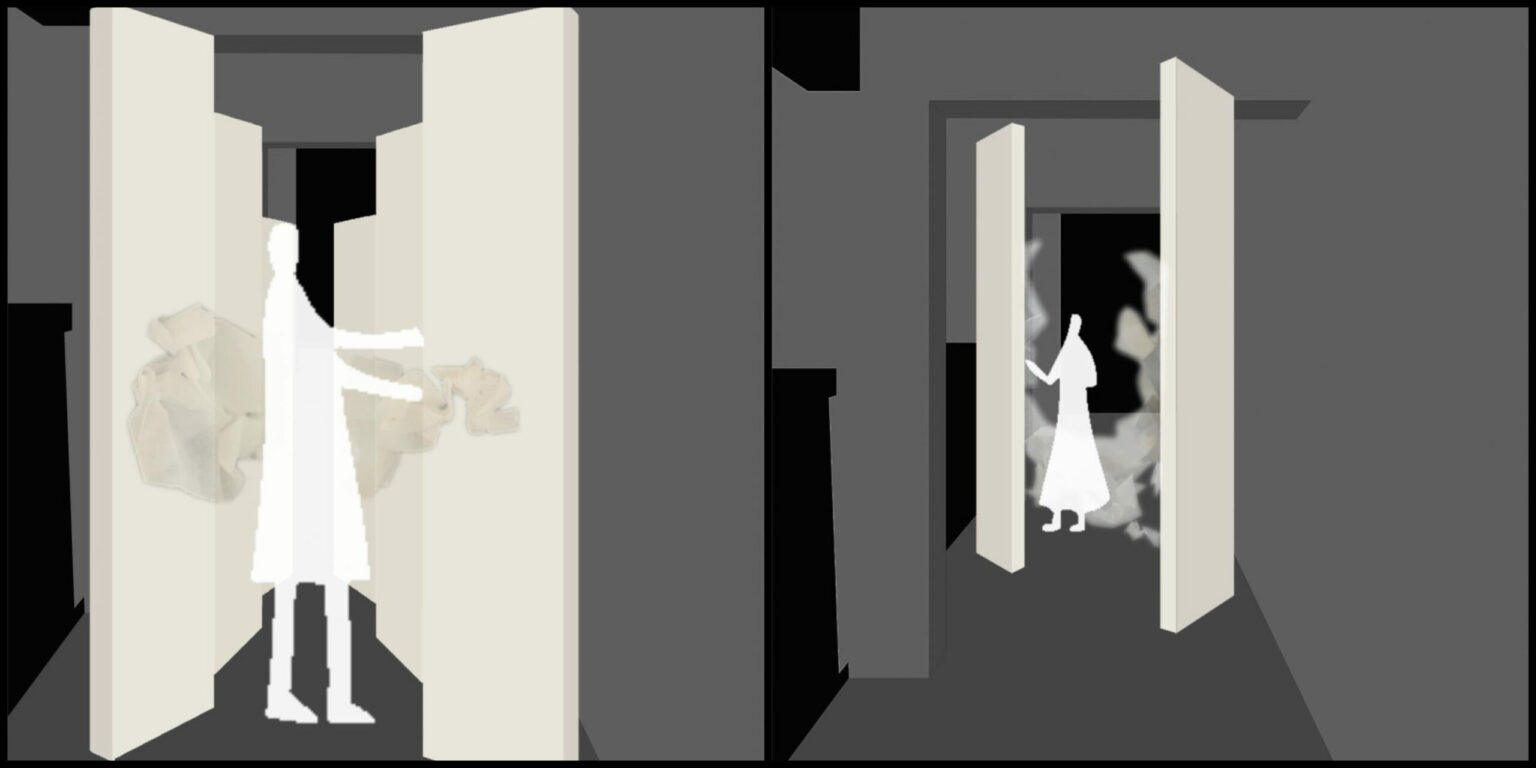YuBing Ng

Project Intent:
Vision might be the most important sense that we rely on in our daily lives. Especially in Singapore, where artificial luminance is employed to brighten up the country at night when the Singapore skyline is lit for all to see. Artificial luminance brightens up our night lives, but unfortunately, excessive lighting has also brought us a plethora of health and environmental issues. What happens if the country was to reduce the excessive luminance at night, and we are left with low-lit to dark space? The projects presented here, explore how we might interact with the spaces around us and its subsequent design, by engaging with our other senses.

Re-engaging of Senses pt. 01: Home
Part 01 Intent:
With darkness as a form of material, I would like to explore the sense of familiarity in the notion of a familiar setting in our HDB estate but with our sight being the less important sense in the space, to create a possible outcome of what it feels like to be in a familiar place by relying on our other senses. Using my usual route to and fro of home, how can I bring back the sense of familiarity lost in the realm of darkness and allow people to maneuver in the dark at ease?
Site:
The chosen site is at Blk 845, Woodlands. I stay at this block and because I am exploring the sense of familiarity in the ‘Known’ spaces, I’ve narrowed down the targeted areas to the five spaces – Void deck walkway, lift lobbies, lift and corridor, as those are the spaces I would journey through from home to school and school to home everyday.



Memory:

Design Outcome



A walk with the leaves
Re-engaging of Senses pt. 2: Rest
Part 02 Intent:
Allow the night shift workers and people around the area to getaway from the well-lit city into a warm and cozy space to relax. With this space, I would want people to re-engage with their other senses in the low-lit environment, relaxing their eyes and be more
intuned to the interior environment instead.
Site:
The chosen site is in between ION Orchard and Wisma Atria. It is a stairway that links the crowd from the MRT station exit to Wisma Atria and a taxi stand behind Wisma Atria. At Orchard Road is a bustling area and well-lit area at night, I wanted to design a space in contrast to the existing site condition for people to rest in that area.

Being inclusive

Design Development

Wayfinding

Layout

Lighting

Rest space


Meditation space
Re-engaging of Senses pt 3: Play
Part 03 Intent:
Allow people to re-engage their senses in the dark through materials in a curated temporal exhibition. To diminish the preconceived notion that people usually adopt about the dark. Through this series of journey through interacting with materials in the space, could allow people to feel a sense of intimacy and belonging in the space.
Site:
The chosen site is at Pasir Panjang Power Station. It used to be a functioning power station in 1953 and in the present, it has been non-functioning and preserved as a landmark by the government. Currently, it hosts music events and exhibitions and people could book the venue for shoots.

Site photos


Design Development

Emotional Journey Mapping

Tunnel vision






